Our next homestay in Bali, finally reached after the aforementioned road trip through Tanah Lot and Belimbing, was a cute and quirky place called House of Hobbit. It was situated in the village of Pejarakan, in a residential section that followed a grid of roads edged by locals’ houses and small farms and that ran along a ridge a few miles from the sea. During our few days of stay there, we got to go snorkeling near Menjangan (a sacred island inhabited only by priests), saw a ritual staff-and-shield fight that asks for the gods to bring more rain, went hiking in the West Bali National Park (where we saw wild monkeys!), visited a local market, and had a number of very interesting conversations with our hosts and the neighborhood children.

We had originally also intended to use this area as a jumping off point to visit Ijen, the volcano of blue fire across the straight in Java (seriously, check out that link), but it was forbidden for asthmatics (like me!) to hike the volcano, which is challenging enough as it is – the path is steep, narrow, often slippery in rainy season, filled with sulfurous fumes, not near a medical center, and must be climbed in the middle of the night if you want to see the famous blue flames… So we ended up calling that off, unfortunately. However, missing out on that gave us more time in Pejarakan to enjoy learning about local life from our generous hosts, so it worked out well regardless. To set the scene for our upcoming posts about what we learned and experienced with those friendly folk, we first want to show you the House of Hobbit!

There was a cute “welcome” sign on the bed made of sticks and flowers, while the kitchen came equipped with breakfast food, coffee, sugar, and of course, “teh”. (It turns out that “teh” is actually “tea” in bahasa Indonesia, but we were amused by its juxtaposition with the other containers in English and its incidental similarity to the word from leetspeak.)

Rooms in Sam, the House: The wood and thatch porch and roof structure; the living room with the mercifully large jug of fresh, cold water and cozy couch; the bedroom complete with AC, TV, comfy bed, and thatched roof; and the bright blue concrete tub in the bathroom.
And because I’m an architecture geek who had never before encountered thatched roofing up close, I found the technology of this simple, ancient and yet sturdy, protective, and waterproof roofing pretty cool. As you can see in these shots, the dried grass is looped over wooden supports and tied on so that the loose stalks of the grass layer on top of each other, while the wooden supports are tied in numerous rows across the structure of the building. This makes a pretty dense coat of the dried grass by the time you add up all the layers, particularly since the outer lines are topped off by fat bundles of yet more grass (as you can see in the above picture of the Sam cottage as a whole), and since the seams where the thatched roof meets the walls get plugged with yet more bundles of tied up grass.
It was very effective in the rain, seemed pretty clean, and mostly kept out the unwelcome arthropods from our bedroom. (We saw reason to use a mosquito net over the bed anyway, and one of our hosts had to help rescue me from a large spider, which he just nonchalantly picked up with his bare hands and tossed into the garden – I wasn’t thrilled with the gaps in the cottage, but it was still cool to have experienced this traditional building technique up close and personal.)

Colorful, squiggly, and big-leafed plants around the garden at House of Hobbit. Also, a mural saying “Keep Calm and Stay At Hobbit’s House”.

And awesomely enough, one of our hosts just climbed onto his cousin’s shoulders to reach the coconuts, machete in hand, and cut down a few for us to drink! To get at the flavored water inside, they hacked off the top of the fruit and just stuck in a big straw and a spoon. The taste is much milder when it’s young, and the edible meat of the coconut is less abundant and more gelatinous. You could also order such opened up young coconuts from warung eateries on the beaches and many of the cafes across Bali, so we happily had this local treat on several occasions. I personally prefer the richer taste of the mature coconuts, but it was the season for the young ones, so we enjoyed them instead.

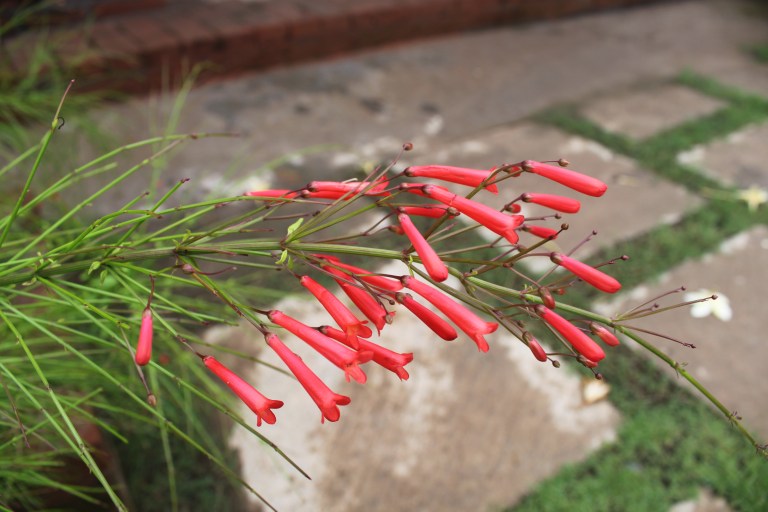
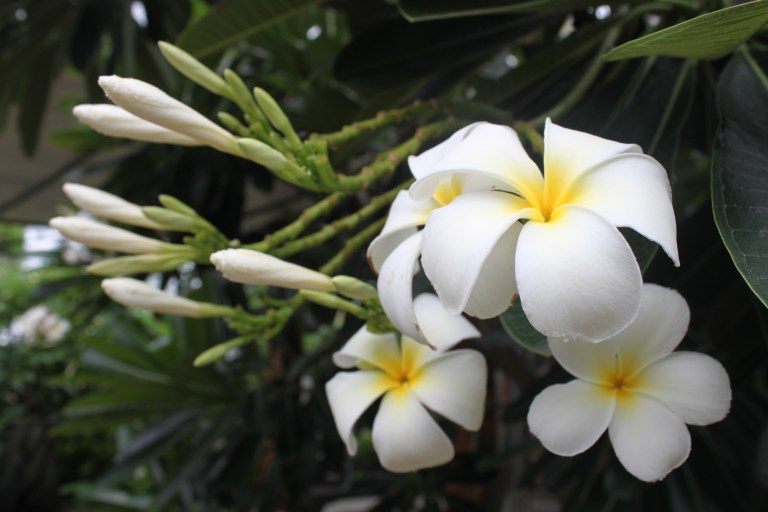



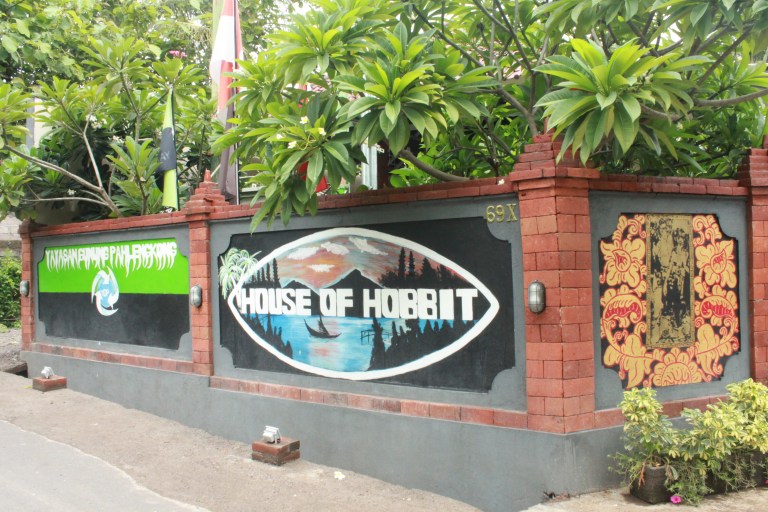
This is the kind of place you can get in Bali when you aim for a homestay a little off the beaten path. Basic but comfortable amenities, lovely garden, and very pleasant hosts!




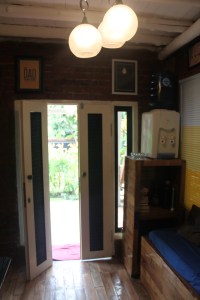
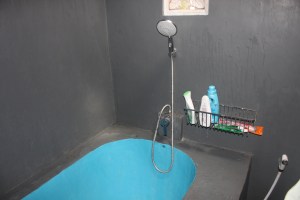

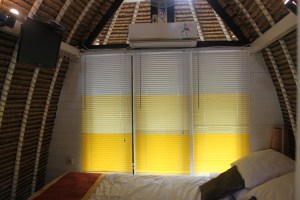

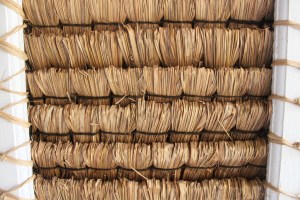
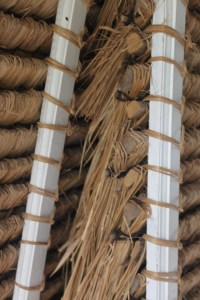
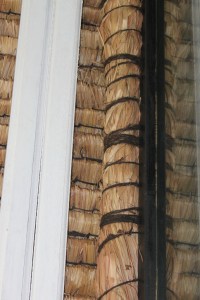
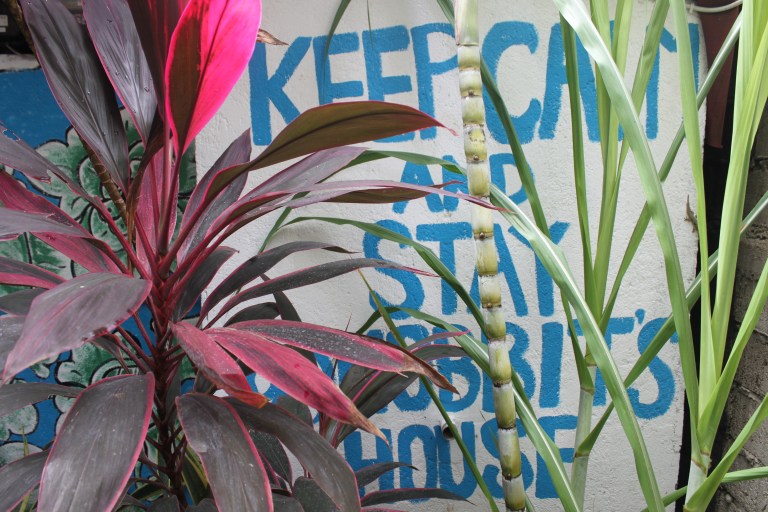

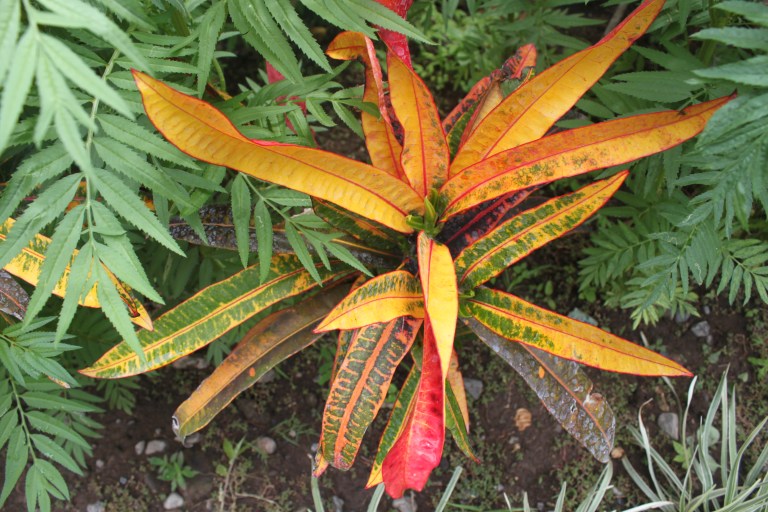
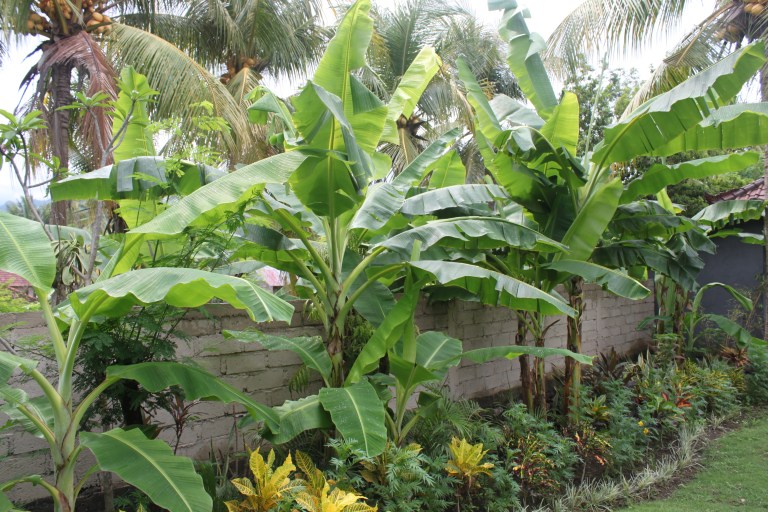
Great Post 👍
LikeLike
Thank you!
LikeLike
I never did read those famous books that hooked you on Bali but I can see how much you enjoyed that real “fantasyland”. Great photos!
LikeLiked by 1 person
Great post.
Look forward to seeing you
Thank you
LikeLiked by 1 person
Thank you, Bobi! And you are welcome.
LikeLike